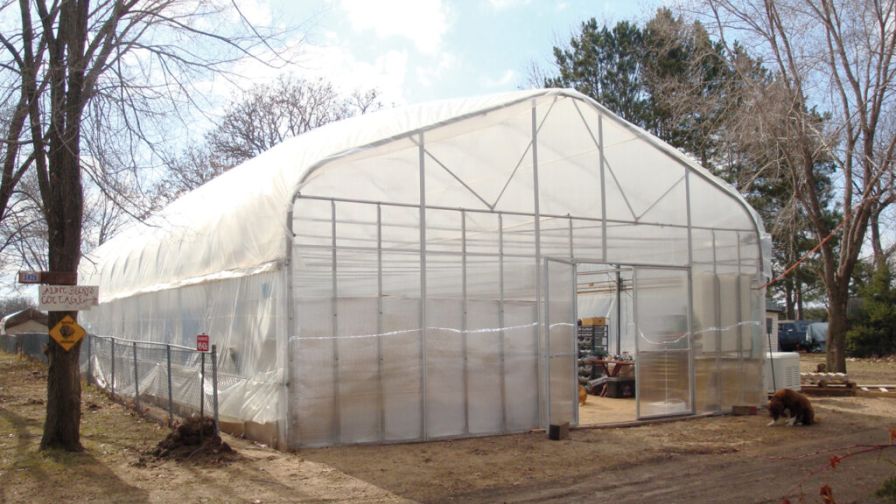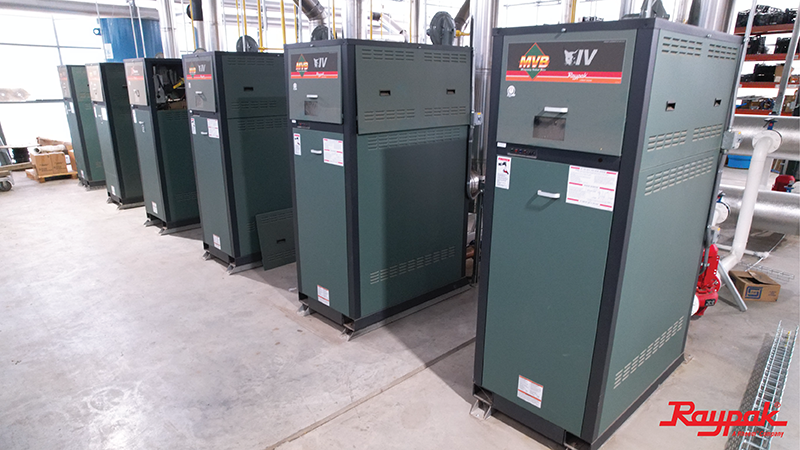Get the Best Out of Your Greenhouse Heater This Winter
 In many regions, growers don’t have to worry about the burden of snow or having to use a greenhouse heater to cultivate year-round. However, for cold-climate growers, a winter greenhouse offers a lifeline to stay competitive by enabling them to grow uninterrupted. Still, success can fluctuate greatly from operation to operation.
In many regions, growers don’t have to worry about the burden of snow or having to use a greenhouse heater to cultivate year-round. However, for cold-climate growers, a winter greenhouse offers a lifeline to stay competitive by enabling them to grow uninterrupted. Still, success can fluctuate greatly from operation to operation.
There are a number of factors that influence performance in a winter greenhouse, and growers often have to consider the smallest details when they prepare their operation for cold weather. To keep production at the highest level, without breaking the bank on utility costs, growers must lay out an effective winter growing strategy.
Primarily, growers should first understand the basics of optimizing heating in their winter greenhouse. This includes knowledge of the various factors that influence heating, different types of greenhouse heaters, as well as how a structure’s design impacts production.
Understanding Btus and R-Value
As it is, there are a number of calculations commercial growers have to make to maximize production. The looming threat of cold weather only adds to the complications, forcing growers with a winter greenhouse to do some extra problem solving.
The first equation to understand in optimizing heating is solving how many BTUs are required to sufficiently heat a winter greenhouse. A BTU, or British Thermal Unit, is a unit of heat, and is defined as the amount of heat required to raise the temperature of one pound of water by one degree Fahrenheit. Calculating the needed BTUs will determine the appropriate size for an operation’s greenhouse heater.
To solve how many BTUs are needed for a specific winter greenhouse to be heated, growers can follow this formula: (Desired Temperature Change) x (Cubic Feet of Space) x .133 = BTUs needed per hour
Every operation’s winter greenhouse will vary in size and require different temperature changes to function properly, so the numbers to fit this equation will almost always vary. Still, it is the starting point for growers in sizing an effective greenhouse heater system.
Determining the size of a greenhouse heater system is an important first step for growers, but any efforts to heat properly will be nullified without also understanding R-Value. R-Value represents a cladding’s thermal resistance, which impacts how effective a winter greenhouse is at retaining heat. It’s important for growers to understand how to calculate heat loss, so they can choose the best cladding for their greenhouse and maintain optimal heating efficiency.
Heat loss can be calculated by using the following formula: Q=A(Ti-To)/R
In this equation, A is the area of the winter greenhouse, while Ti and To represent the indoor and outdoor temperatures. The R symbolizes a cladding’s R-value, and with a higher number in R, Q results in a lower number, meaning fewer BTUs lost per hour.
While a greenhouse heater works to supply BTUs in a winter greenhouse, the cladding keeps that heat in. Understanding the relationship between these two factors helps growers make informed decisions about their winter greenhouse, which can aid them in keeping utility costs down and ensuring valuable heat doesn’t escape their structure.
Choosing the Right Greenhouse Heater
Sizing out a greenhouse heater is critical to growers’ budgets, as well as the health of their plants. To truly optimize heating, though, growers also need to understand the fundamental differences between various greenhouse heaters and choose a high-efficiency option that can save them money, while still being effective.
The two most common types of greenhouse heaters are gas and electric greenhouse heaters. Gas greenhouse heaters typically employ propane or natural gas and are commonly used because of their relatively lower cost and high productivity. They are also convenient for growers who do not have access to electricity, although this is uncommon in larger commercial operations.
Gas heaters, however, emit fumes into the air, which can be an issue in a winter greenhouse that is sealed up to prevent heat loss. Without proper ventilation and air circulation, these fumes can cause issues for both plant and worker health.
Electric greenhouse heaters generally offer a better solution for a winter greenhouse, as they do not emit the same fumes and don’t require a natural gas line or consistent fuel supply. Electric greenhouse heaters work well with programmable thermostats or environmental controllers, meaning they can be more easily automated.
Continue reading at GrowSpan.com.









